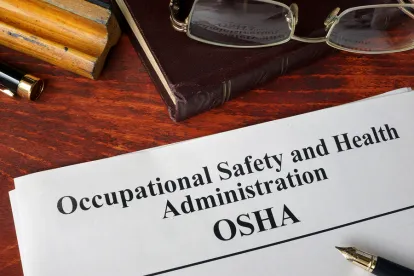On Nov. 19, 2020, the California Occupational Health & Safety Standards Board unanimously adopted 21 pages of emergency Coronavirus Disease 2019 (COVID-19) safety regulations (Regulations). The Regulations are broad. They apply to all employees and places of employment except: (1) those places of employment with one employee who does not have contact with others; (2) employees working from home; and (3) employees covered by Title 8 of the California Code of Regulations, Section 5199 (e.g., health care facilities, facilities designed to receive persons arriving from a scene of hazardous substances, police services, public health services, labs reasonably anticipated to contain aerosol transmissible pathogens, and any other facility determined by OSHA to require the standards in Section 5199).
If adopted as written, the Regulations will require several new mandates, which are briefly summarized below.
First, the Regulations amend existing Section 3205 by adding language that requires employers to: (1) maintain a written COVID-19 training program and (2) maintain a written COVID-19 prevention program with detailed requirements, which can be incorporated into the employer’s existing Illness and Injury Prevention Program.
Second, the Regulations create a new emergency Section 3205.1, which would apply in the event of multiple COVID-19 infections and/or outbreaks in the workplace. This Section requires employers that have been identified by a local health department as the location of a COVID-19 outbreak or that have had three or more COVID-19 cases reported in their workplace within a 14-day period to: (1) provide COVID-19 testing to exposed employees at no cost to those employees; (2) exclude COVID-19 infected employees from the workplace; (3) investigate and determine workplace-related factors contributing to the COVID-19 infections; (4) review their COVID-19 policies and procedures and implement changes to prevent further spread in the workplace; and (5) notify the local health department.
Third, the Regulations create a new emergency Section 3205.2. This Section would apply in the event of a major outbreak in the workplace, defined as when there are 20 or more COVID-19 cases reported in an exposed workplace within a 30-day period. It requires employers to: (1) provide COVID-19 testing at no cost to the employee at least twice a week (or more frequently if recommended by the local health department); (2) correct COVID-19 hazards; and (3) comply with the requirements for multiple COVID-19 infections and outbreaks reported in the workplace (as described above).
Fourth, the Regulations create a new Section 3205.3, which mandates additional requirements for employers who provide housing to their employees. This Section requires employers to implement: (1) prioritized housing assignments; (2) physical distancing requirements; (3) face covering requirements; (4) cleaning and disinfecting procedures; (5) symptom screening procedures; (6) COVID-19 testing requirements; and (7) an isolation process.
Finally, the Regulations create a new Section 3205.4, which contains requirements for employers that provide transportation to and from work. With some exceptions, this Section requires employers to implement: (1) prioritized transportation assignments; (2) physical distancing and face covering requirements in employer provided vehicles; (3) symptom screening procedures; (4) cleaning and disinfecting procedures; (5) ventilation requirements; and (6) hand-hygiene requirements.
The above requirements each contain additional and potentially burdensome sub-components that are beyond the scope of this alert.
The Office of Administrative Law (OAL) will have 10 days from Nov. 19, 2020, to review and decide whether to approve the Regulations. If the OAL approves them, it will file the Regulations with the Secretary of State and, assuming there are no delays in the OAL’s process, the Regulations could go into effect as soon as Nov. 30, 2020. It should be noted that there does not appear to be a grace period in which to comply.
Employers may consider the following to prepare for these changes:
- A thorough review of all obligations required and how they apply to particular employment arrangements at each workplace.
- HR and management training in implementation and administration.
- A proper record of compliance.
- Updated policies and Illness and Injury Prevention Programs.





 />i
/>i

